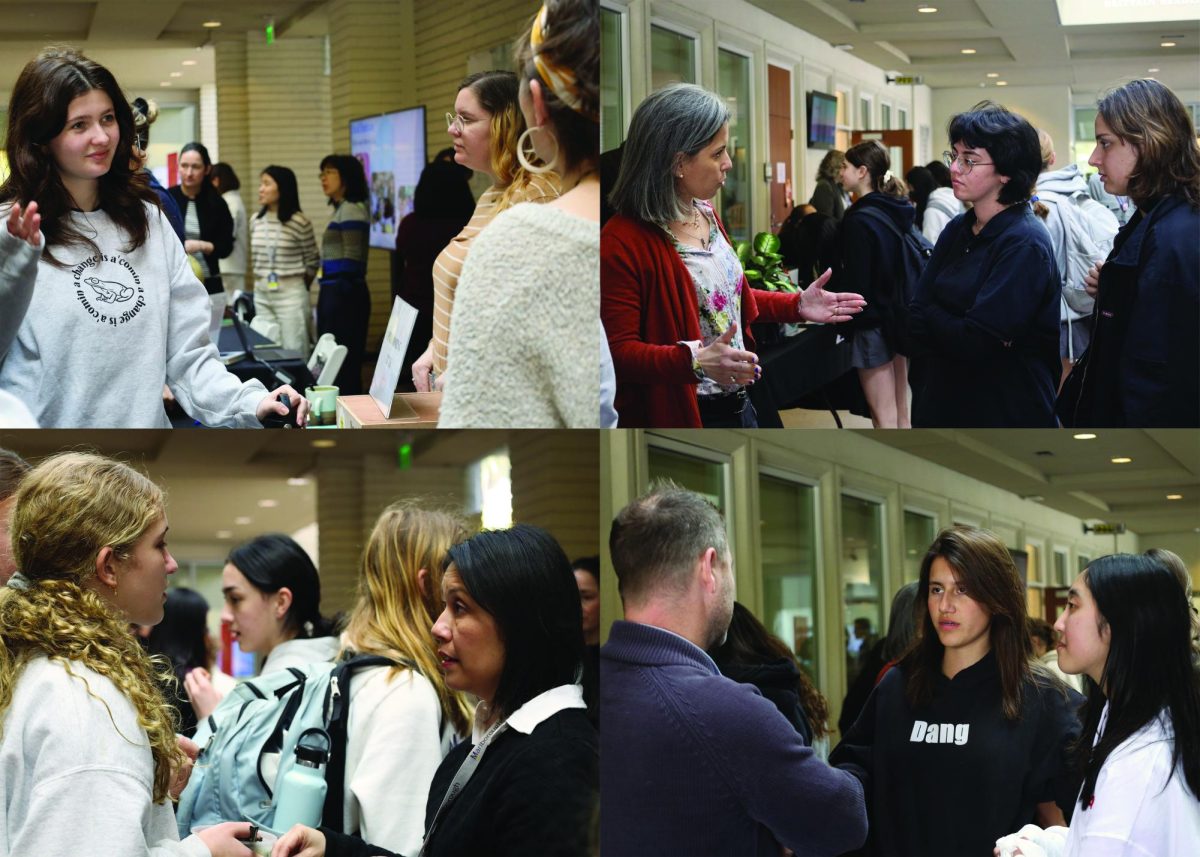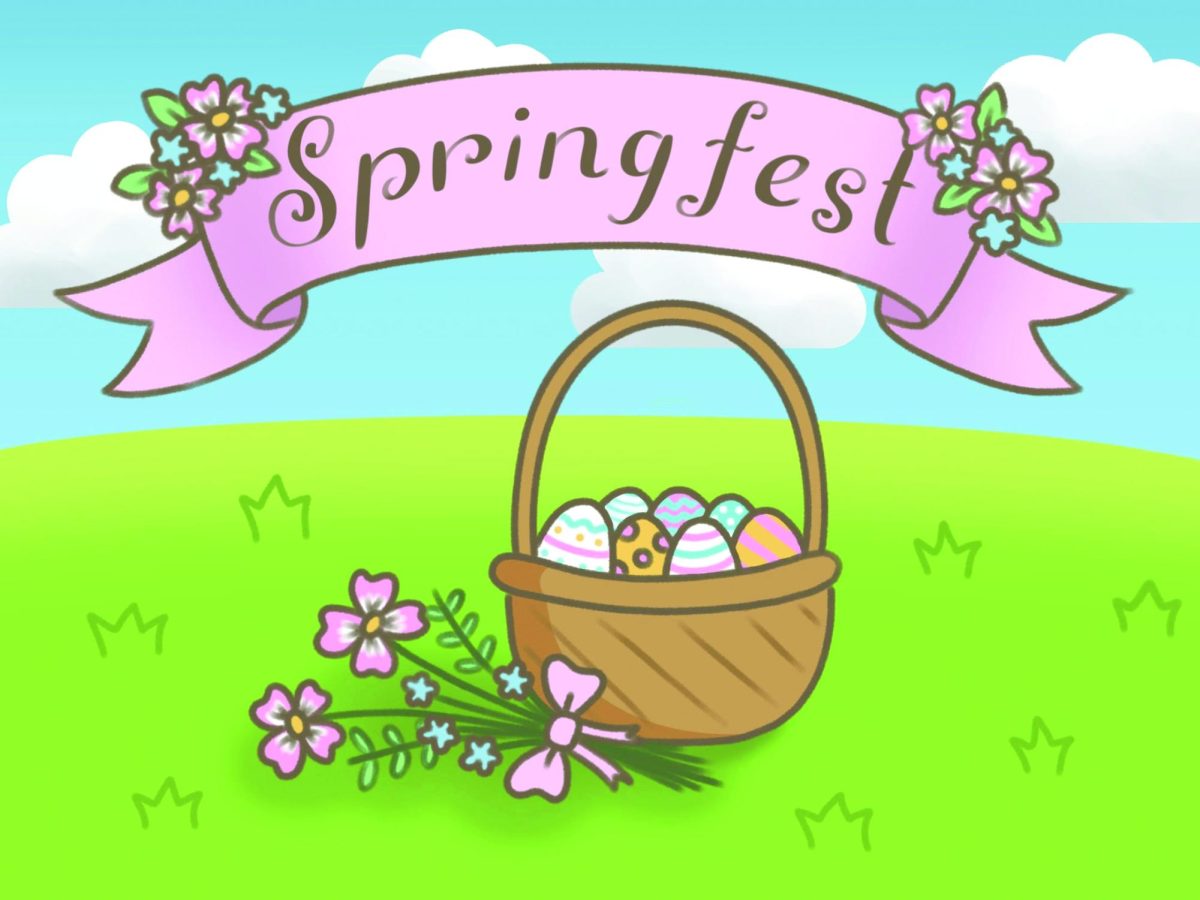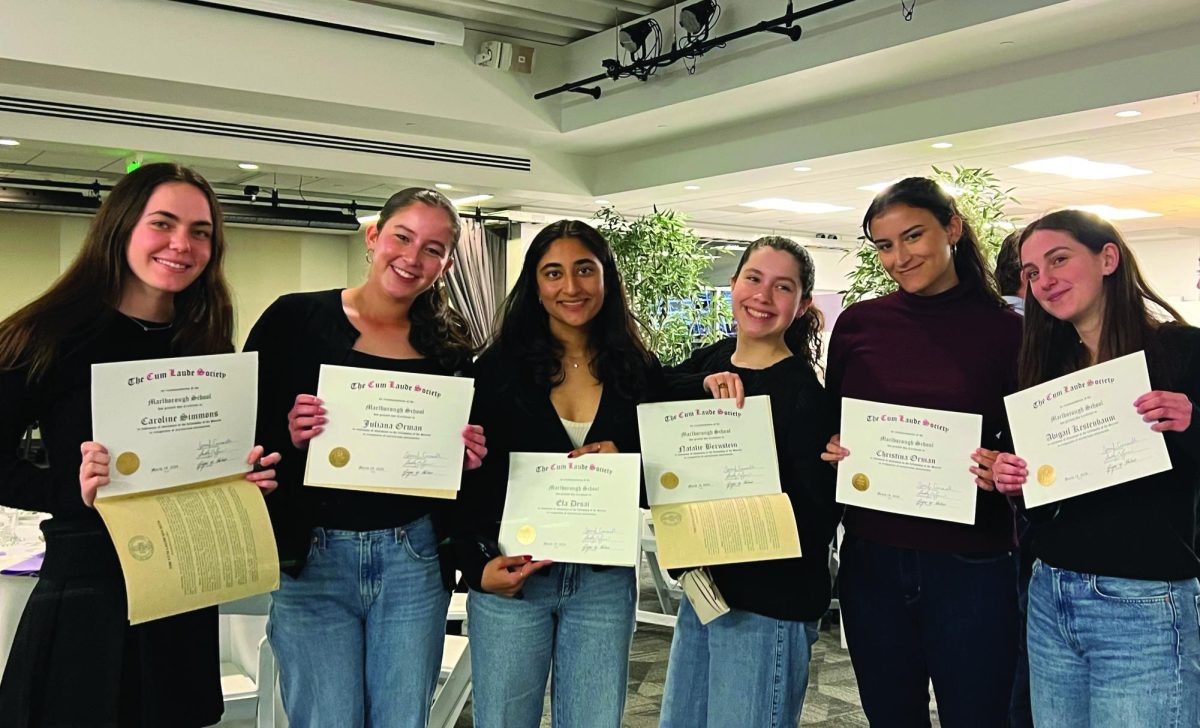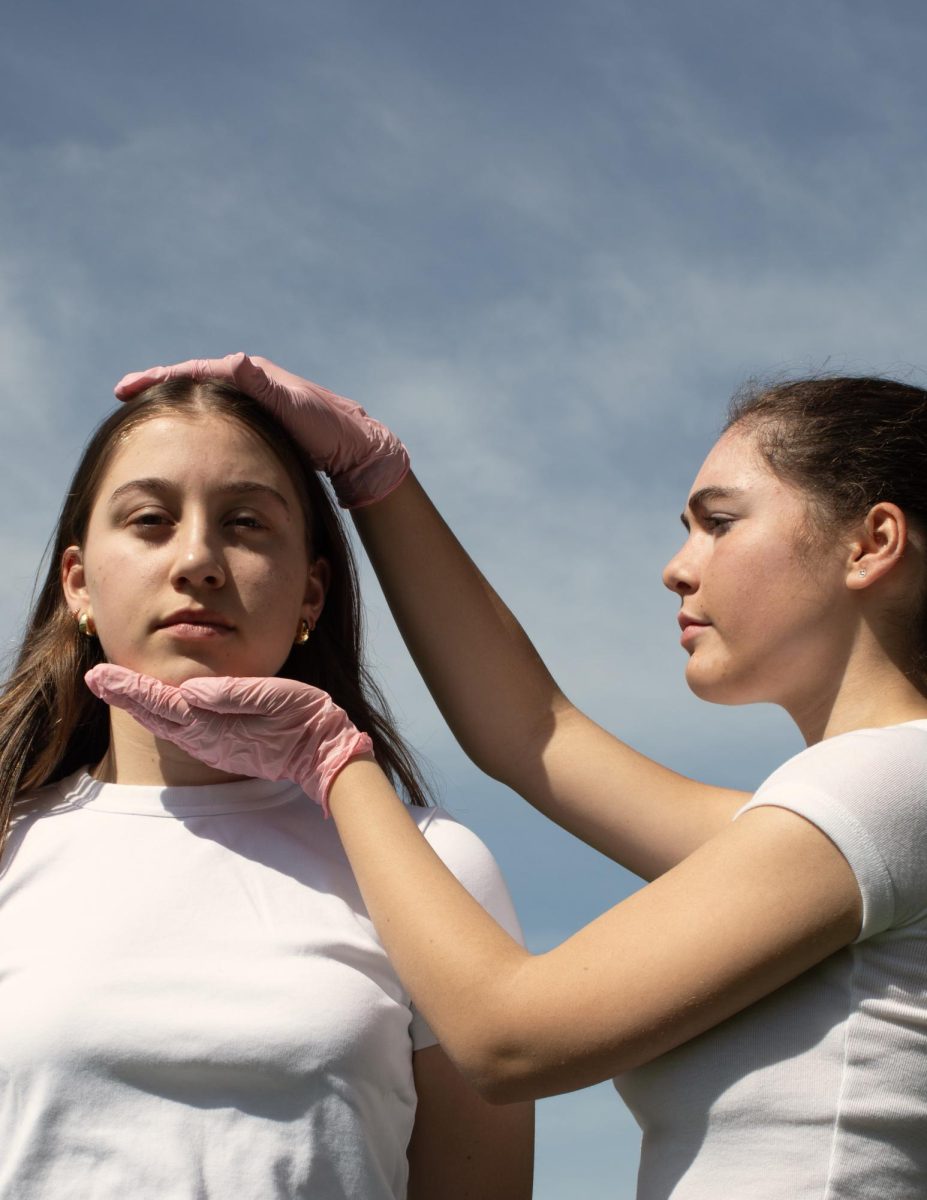
By Rachel ’19, Maggie ’18 and Emily ’17
Since the Boston Tea Party, America’s first well-known protest, public demonstrations have played an integral role in our country’s history by providing a mechanism for groups of people to gather, voice their opinions and affect societal change. These principles form the very foundation of our nation’s ideals.
Historically, protest and rebellion have been ways for young people, especially those who are not old enough to vote, to find their voices and facilitate change. This was especially relevant during the 1960s, a time of immense social and political change when young activists were the driving force for free speech, civil rights and antiwar movements, staging sit-ins and other nonviolent protests.
After the University of California, Berkeley administration asked that students stop all political activity on school grounds in 1964, students started the Free Speech Movement to pressure the University to acknowledge their freedom of speech and academic freedom. This movement set in motion a series of other protests on campus that gained national attention and put a spotlight on youth protest around the nation.
Following the ’60s spirit of protest, during the 1980s, college students across the country at universities including Harvard, Stanford, and Columbia held sit-in protests for their schools to divest in order to end South African apartheid. Many of the students were successful in pressuring their colleges to stop investing in companies that were connected to South Africa.
This on-campus need to protest has made a comeback within the past few years.
Two years ago there were marches at University of California Los Angeles, and on other UC campuses protesting the rise in tuition. Just last year, after Claremont McKenna College’s dean of students Mary Spellman sent an offensive email to a Latina student, students at the college protested until she resigned days later.
According to a recent article entitled The Revolution on America’s Campuses, where Time magazine looked at the latest results from an annual UCLA study on protest, “The share of students who said there was a “very good chance” they would participate in a protest while enrolled rose to 8.5 percent nationwide from 5.6 percent in 2014. Among black students, the share climbed from 10.5 percent to a full 16 percent. These figures were the highest the survey recorded since it began in 1967.”
Despite the increase in youth engagement in protest across college campuses, at Marlborough, there are very few times when students decide to to protest. The lack of protest among Marlborough students may stem from a lack of motivation to participate, or even a fear of challenging authority.
However, Assistant Head of School and Head of Upper School, Laura Hotchkiss ’86 noted the importance of doing just that.
“In the classroom you have great discussion, dialogue and debate…learning to disagree with respect is really important…I think [questioning authority] is healthy…I think we have to give space for that,” said Hotchkiss.
While student engagement in protest is supported by schools, the campaigns students become involved in are often ones without controversy. In an NPR article, Senior Education Editor Steve Drummond interviewed Diana E. Hess and Paula McAvoy, authors of The Political Classroom: Evidence and Ethics in Democratic Education.
“There are a number of schools that encourage students to get involved in political campaigns, but they tend to be political campaigns that really aren’t very controversial. They’ll encourage kids to form a campaign about something that everyone agrees should be done…[but] it’s really important to make sure you have issues for which there are multiple and competing views…” Hess said.
Hess and McAvoy call campaigns like these, where there there is no question about whether or not something is a problem, “settled issues.” Students at Marlborough have experienced this when engaging in protests. Ellie Feingold ’18 participated in climate-change protests through Marlborough, and brought up a similar problem that if protests only comprise people who have similar views, they may not be effective in bringing attention to the issue at hand.
“I don’t think protests are necessarily the best way of getting something done. The protests I have been to are very homogeneous; everyone who goes to the protests believes the same thing,” Feingold said.
Despite the fact protests appeal especially to like-minded individuals, the passion young people feel for their causes is the most critical ingredient for success.
According to Marilyn Price-Mitchell Ph.D., a Fellow at the Institute for Social Innovation at Fielding Graduate University researching child and adolescent development and youth civic engagement, no matter how young people choose to challenge authority, the driving psychological force behind their protest is always the same – anger.
“When young people care fiercely enough about justice, equality, or other societal issues, their voices are powerful agents for change…When they take part in dialogue; walk together in peaceful protests; and problem-solve in their local communities, they send a strong, formidable message to elected officials,” wrote Price-Mitchell in an article for Psychology Today.
Although students at Marlborough may feel angry about certain issues, there is a lack of follow-through regarding organized protests. Grace Kim ’17 noted that Marlborough girls have the tools required to protest, but tend to stay within the comfort of sheltered environments.
“I think a lot of girls might want to protest, and that they have the intellectual capability to do so, but I think part of the reason why there aren’t protests here is because we’re very sheltered and we have this sort of Marlborough bubble where we don’t go outside of where we live and Marlborough…I think it’s easier to protest in college where you have movements going on in the college campus,” said Kim.
Social Media and Political Activism
While there are several factors that have changed the dynamic of protests, one of the most important changes is the usage of social media as a platform for political and social change. The global scale of sites, like Instagram and Facebook, has helped protests gain massive support and awareness as they provide an opportunity for interactive discussion from people all around the world.
Social media has also made it harder for government authorities and the public to deny the reality of a situation. Posted videos and pictures can provide authentic depictions of real incidents and often evoke a strong emotional response from viewers.
The Black Lives Matter movement is one of the most significant examples of people using social media to promote acknowledgement of police brutality towards black Americans. Catherine Atwell, History and Social Studies Instructor, explained that by creating the hashtag #blacklivesmatter on Instagram and posting videos and pictures to illustrate examples of police brutality, activists have raised awareness among many people and have started a conversation about racism in the America.
“It was only once there was tangible evidence through media that could be publicized, that it really shook up the dynamic. So I don’t think that without those, unfortunately, brutal [and] graphic videos, in some cases, the black lives matter movement would have had the same degree of success; it’s something that [people] really have to confront,” Atwell said.
Malcolm Gladwell, an author and journalist for the New Yorker agrees that social media does help raise awareness for an issue, but explains that the it can have adverse consequences as well. In his article “Small Change”, he explains that social media is the main reason that modern protests have weak ties and are not as effective as they were in the 1960s. Since people don’t always actually know their “friends” on social media sites, protesters have lost the collaborative spirit that made protests so successful before. Gladwell argues this loose network allows people to feel like they are making a change even when their contribution may not be enough to truly solve an issue.
“In other words, Facebook activism succeeds not by motivating people to make a real sacrifice but by motivating them to do the things that people do when they are not motivated enough to make a real sacrifice,” Gladwell wrote.
Gladwell also adds that when protesters organize on social media, everyone has an equal say, which makes it difficult for there to be a powerful, galvanizing leader.
“No one believes that the articulation of a coherent design philosophy is best handled by a sprawling, leaderless organizational system, “ said Gladwell. “Because networks don’t have a centralized leadership structure and clear lines of authority, they have real difficulty reaching consensus and setting goals.”
While movements during the 1960s had strong leaders who helped lead and instruct people, our modern protests have lost that advantage.
Marlborough and protests
Over the past 15 years, according to archivist Peter Chinnici, Marlborough has transitioned from a more closed and conservative institution to one that is open and progressive. The School community up until the late 1990s was much more conservative than it is today. Additionally, controversial issues were almost never openly discussed in the classroom. However, according to several faculty members, this shift in political and social beliefs has not raised students’ overall activism. Neither Hotchkiss nor Chinnici could cite any current or past protests that Marlborough girls have led or even participated in.
Chinnici explained that before the 1990s, even though several protests were occurring nearby, students didn’t participate because of their conservative beliefs.
“I think the school and the leadership for the school and the parents tended to be pretty conservative individuals. The whole concept of protests was very alien to them,” Chinnici said.
According to Hotchkiss, Marlborough was not a place that fostered open conversation and political activism.
“The [girls’] discussions happened around the dinner table, and the [discussions] didn’t really come onto campus [before the 2000s]…[Marlborough] was not as open to dialogue,” Hotchkiss said
Chinnici, who specializes in the history of the school, reported that during its conservative years, it was not as diverse as it is today. He also explained that girls mostly came from wealthy neighborhoods, and most controversial topics were subtle and brushed over.
Even though Marlborough has become more progressive in the sense that teachers openly discuss politics in the classroom, the girls still are not picketing, protesting or challenging authority in any substantial way [will insert stats here about how they don’t protest].
Naomi Sulton ‘92, a previous member of The UltraViolet staff, wrote about this very phenomenon in an article entitled “Why Aren’t We Involved?”. In the article, Naomi questions why Marlborough girls did not participate in a pro-choice rally even though their friends did at another Los Angeles all-girls school called Westlake School.
“I don’t think we can just say that people at Marlborough are really unmotivated in and of themselves…[but] nobody was willing to make the time to attend or organize an event…[and] no one was really sure if anyone else was going to go and didn’t want to go alone,” Sulton wrote.
Both Chinnici and Sulton attribute at least a part of the community’s lack of political activism to the fact that the students are so consumed with work that they don’t make the time to engage in other areas of the world. However, Sulton also hypothesized that girls may be afraid of going alone to rallies and protests because they may not want to seem different from other students.
Additionally, Hotchkiss explained that some Marlborough girls today may even stray from protests because of a fear of being considered mean.
“We want to be nice girls…I don’t know if it is good to be seen as nice always,” Hotchkiss said.
Marlborough’s faculty tend to be in agreement about the positive benefits of putting aside the fear of being mean or being an outcast in order to stand up for personal beliefs. History and Social Sciences Department Head, Jonathon Allen, strongly believes in the power of protest.
“I think the answer is an overwhelming yes that Marlborough girls should be more active [in civil protests],” Allen said, “the first step is being informed and updated on current events.”












